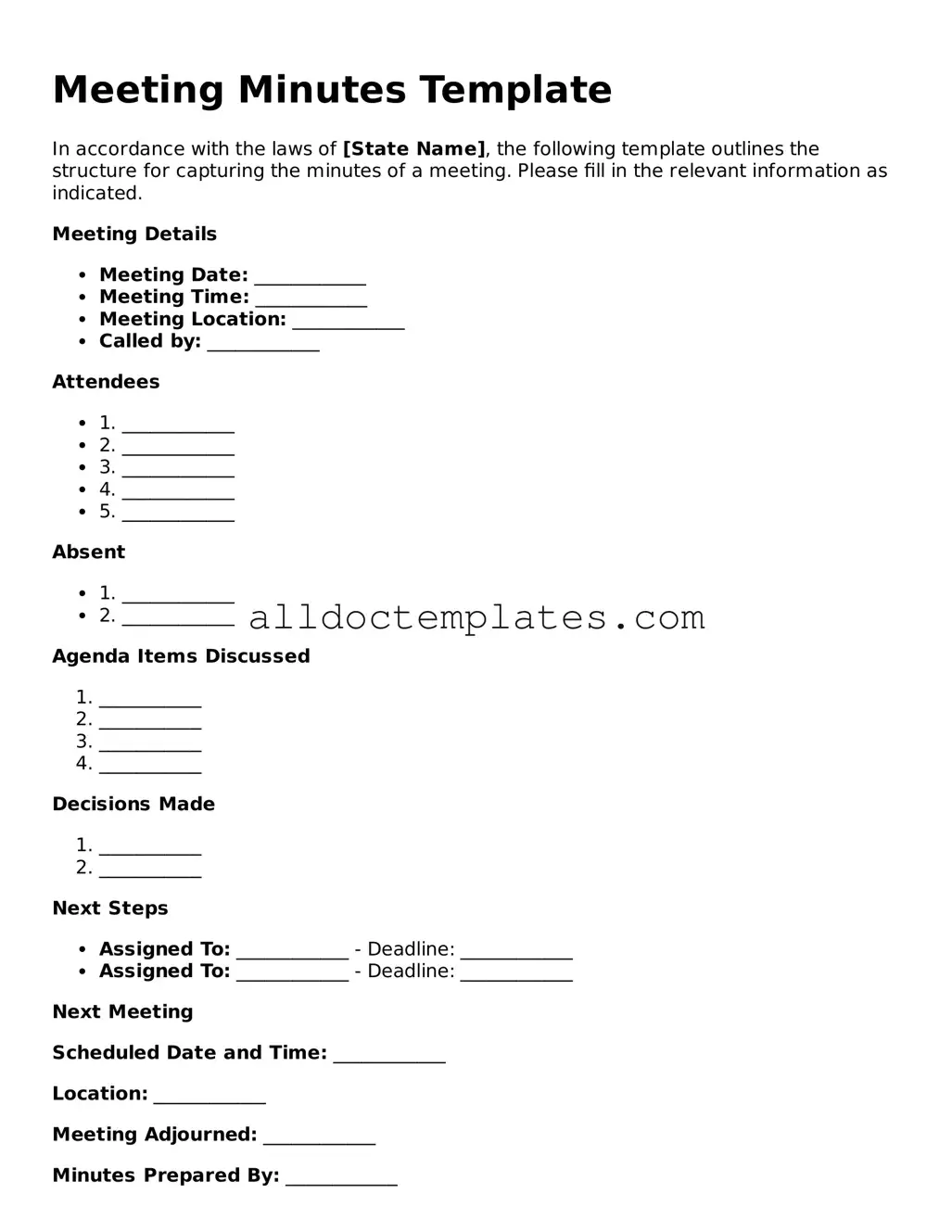Valid Meeting Minutes Template
The Meeting Minutes form serves as a crucial document that records the key discussions, decisions, and actions taken during a meeting. It provides a formal account that can be referenced later, ensuring accountability and clarity among participants. Properly maintained meeting minutes can enhance communication and foster transparency within organizations.
Get Your Form Now
